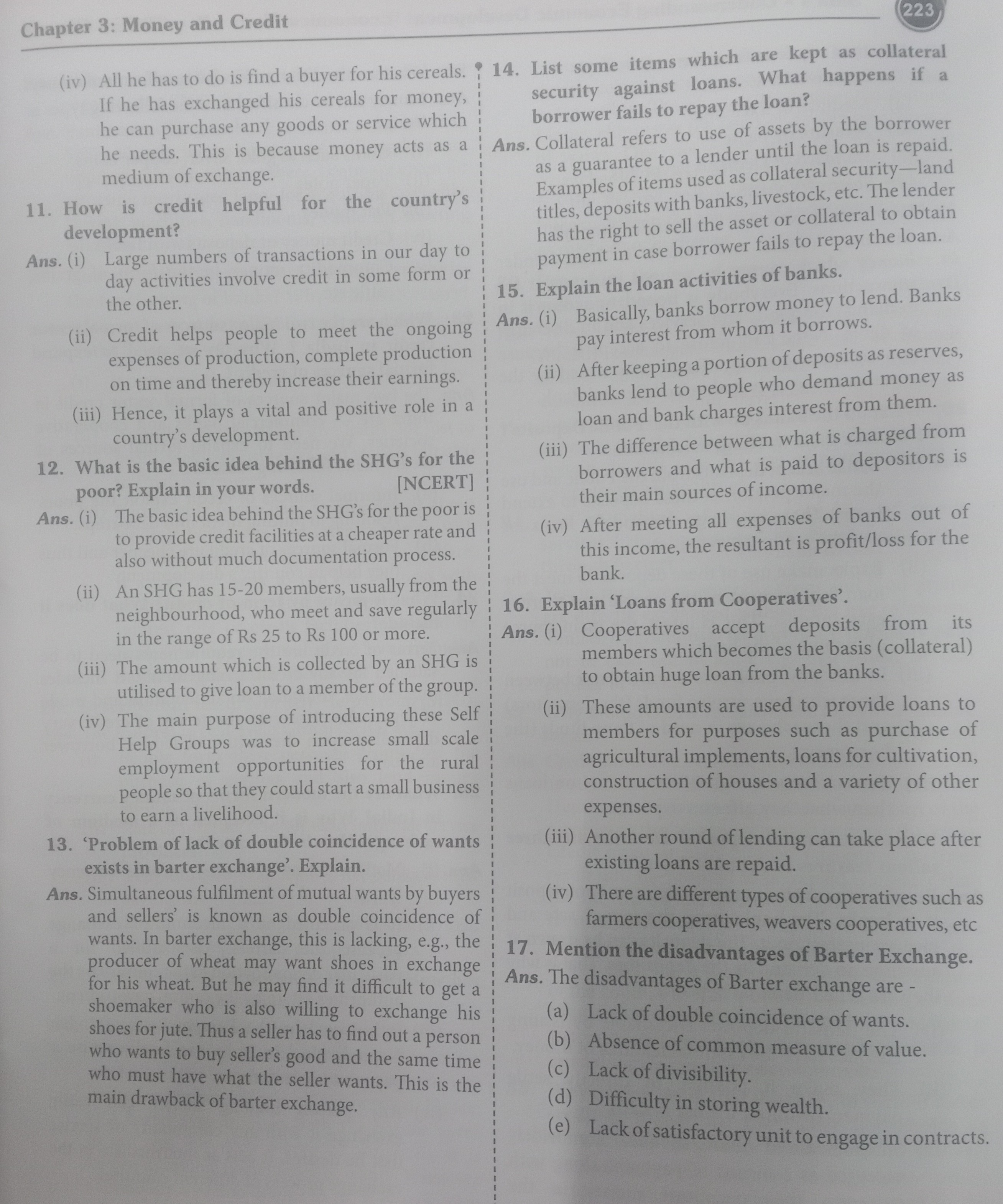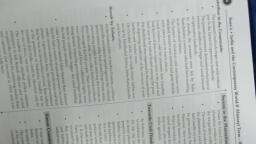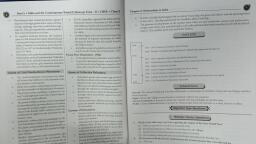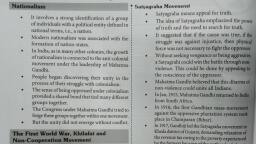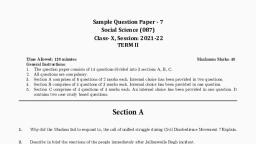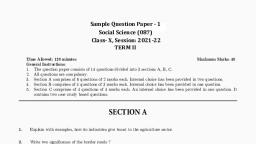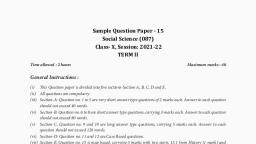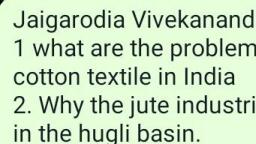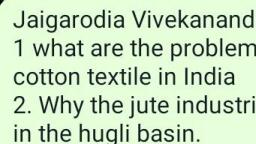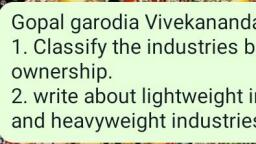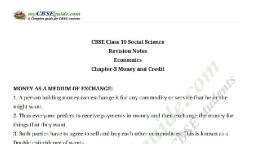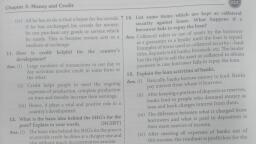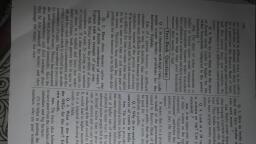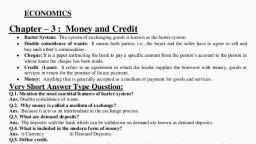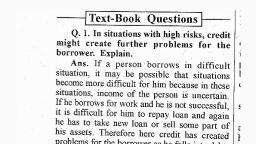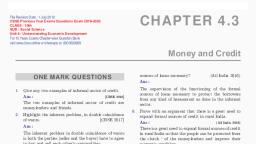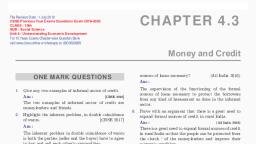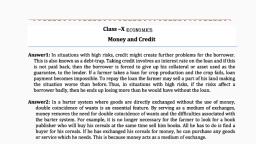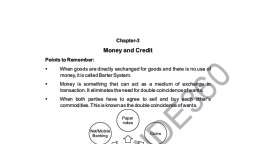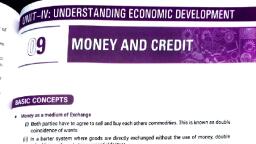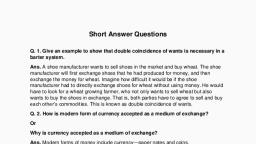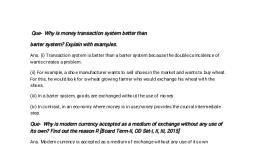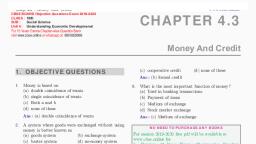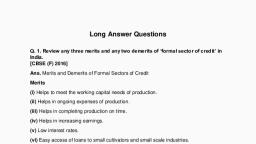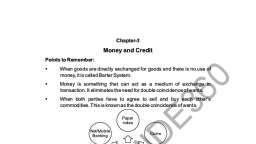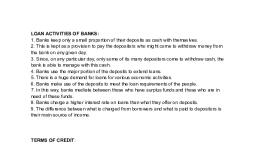Page 1 :
Chapter 3: Money and Credit, , ————, , , , (iv) All he has to do is find a buyer for his cereals., if he has exchanged his cereals for money,, he can purchase any goods or service which, he needs. This is because money acts as a, medium of exchange., , 11. How is credit helpful for the country’s, , development?, Ans. (i) Large numbers of transactions in our day to, day activities involve credit in some form or, , the other., , (ii) Credit helps people to meet the ongoing, expenses of production, complete production, on time and thereby increase their earnings., , (iii) Hence, it plays a vital and positive role in a, country’s development., , 12. What is the basic idea behind the SHG’s for the, poor? Explain in your words. [NCERT], Ans. (i) The basic idea behind the SHG’s for the poor is, , to provide credit facilities at a cheaper rate and, also without much documentation process., , (ii) An SHG has 15-20 members, usually from the, neighbourhood, who meet and save regularly, in the range of Rs 25 to Rs 100 or more., , (iii) The amount which is collected by an SHG is, utilised to give loan to a member of the group., , The main purpose of introducing these Self, Help Groups was to increase small scale, employment opportunities for the rural, people so that they could start a small business, to earn a livelihood., , (iv), , 13. ‘Problem of lack of double coincidence of wants, exists in barter exchange’. Explain., , Ans. Simul ulfilment of mutual wants by buyers, , ane double coincidence of, , ing, e.g., the, , in exchange, , , , , , , ee, ee, , , , we, , 14. List some items which are kept as collateral, security against loans. What happens if a, borrower fails to repay the loan?, , Ans. Collateral refers to use of assets by the borrower, as a guarantee to a lender until the loan is repaid., Examples of items used as collateral security—land, titles, deposits with banks, livestock, etc. The lender, has the right to sell the asset Or collateral to obtain, , payment in case borrower fails to repay the loan., of banks., , 15. Explain the loan activities, banks borrow money to lend. Banks, pay interest from whom it borrows., , (ii) After keeping a portion of deposits as reserves,, banks lend to people who demand money as, loan and bank charges interest from them., , (iii) The difference between what is charged from, borrowers and what is paid to depositors is, their main sources of income., , (iv) After meeting all expenses of banks out of, this income, the resultant is profit/loss for the, bank., , 16. Explain ‘Loans from Cooperatives’., Ans. (i) Cooperatives accept deposits from its, , , , @, i, I, 1, I, 1, i, 1, i, !, , | Ans. (i) Basically,, , , , , , , , members which the basis (collateral), , to obtain huge yanks., (ii) These loans to, _ me chase of, , , , , , iltivation,, y of other, , lace after, , i, f, I, !, 1, 1, 1, i, i, 1, ', 1, i, 1, !, i, 1, 1, !, i, !, 1, I, i, {, i, 1, i, 1, 1, 1, i, 1, 1, !, I, I, !, 1, 1, t, 1, 1, I, 1, 1, 1, 1, i, 1, 1, 1, !, 1, t, 1, 1, I, 1, 1, 1, 1, 1, 1, 1, 1, I, 1, ', 1, i, 1, ', 1, 1, t, 1, :, 1, 1, 1, U, ', 1, t, 1, 1, 1, 1, 1, 1, 1, :, 1
